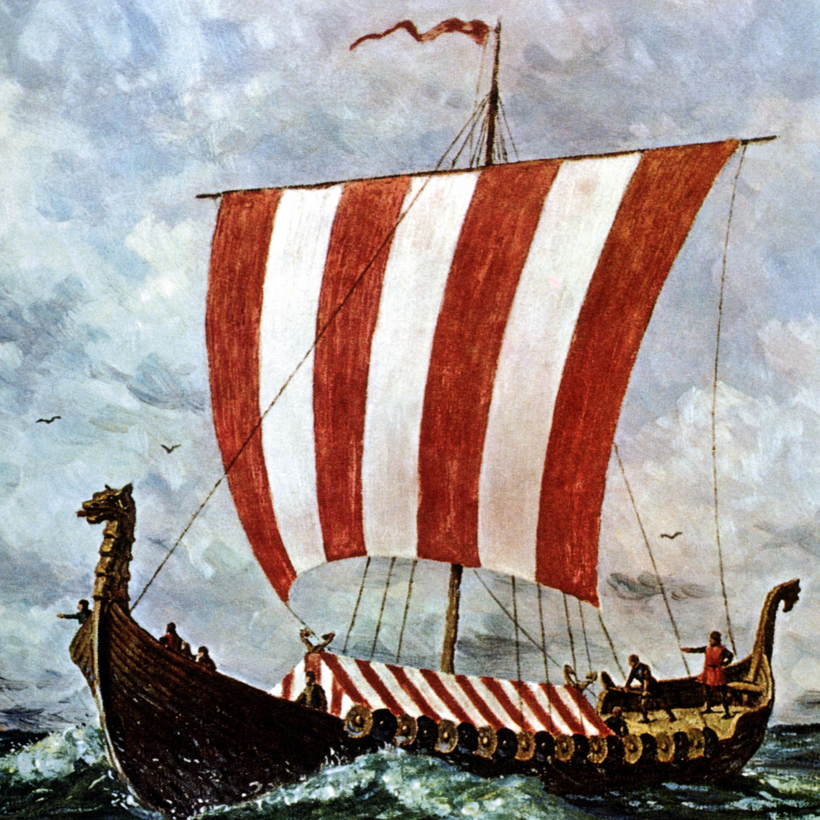Almost everybody has heard of the Vikings, and what they have heard is usually bad: raids of plunder and pillage, murder and slavery, longships disgorging bands of barbarian marauders to chase the English and frighten the clergy—images that are resolutely violent, maritime, and male. There is some truth in this, to be sure, but the Scandinavian peoples who expanded so dramatically into the northern world from about 750 to 1050 A.D. were also traders, settlers, artists, and poets, possessed of a sophisticated and subtle culture with a gender spectrum as broad as our own.
In the course of more than 30 years spent researching the Vikings, what I still find most exciting, and surprising, is their own sense of who they were, of what it meant to be human. The Viking soul was a complex and many-layered place, populated with a bewildering variety of beings described in Old Norse poetry and in medieval Icelandic sagas.
Nordic Matryoshka
The Vikings saw a human being as having four primary components, of which the most obvious was the hamr, the “shape” or “shell.” This is what we understand as the body itself, but for the Norse it was a physical container for the other aspects of the person. Crucially, for a few specially gifted people, it was not fixed but could alter (thus the concept of “shape-shifting”), allowing their bodies to flow into other forms—usually large predators such as bears or wolves for men, and birds or sea mammals for women. Right at the core, the Viking sense of self went beyond what we would call “human” at all.
Inside the hamr was something much more diffuse, the hugr, approximating the “mind” or “soul.” This was intangible but unchanging, the absolute essence of who a person really was, stripped of all artifice and pretense. Some people, such as sorcerers, could send their souls out of the body to do errands in the other worlds. In this state they were vulnerable, as seen in the text of a terrible spell used by the god Odin against the spirits of witches: “I can so contrive it that they go astray / from the home of their shapes [heimhama], from the home of their minds [heimhuga],” their souls cut loose and drifting to formless destruction.
The soul was intangible but unchanging, the absolute essence of who a person really was.
Also enclosed by the “shell” was the hamingja—perhaps the strangest of all the Viking soul beings in that it was the literal personification of an individual’s luck. This was one of the most important personal qualities in the Viking Age, and it seems appropriate that luck was conceived actually as a semi-independent spirit. The hamingja appeared in human form, though was visible only to those with the “sight,” and could leave the body to walk about. In really dire straits, a luck spirit could even desert its person, both cause and effect of the worst-case scenarios.
The last of the Viking soul beings was the fylgja, the “follower.” Every person had one dwelling inside, acting as a sort of guardian spirit and protector. Fylgjur were always female, for everyone; in a culture known today for a caricature of masculinity, how marvelously subversive that every single man knew he had a spirit woman within him. They were normally invisible, but sometimes appeared in dreams to warn of danger or misfortune. On occasion they manifested as animals, but always with something human about the eyes. The fylgjur were beings of family and could be inherited from one generation to another as a direct connection with the ancestors.
Of all the supernatural creatures and spirits of Norse mythology and belief, it is the fylgjur that have lasted longest. While the others—the gods and goddesses, Valkyries, elves, dwarves, giants, and the rest—now inhabit fantasy fiction and Marvel movies, the fylgjur are still alive in the popular consciousness of Iceland, and taken very seriously indeed. They are our last link to the Viking mind: long may they thrive.
Neil Price’s Children of Ash and Elm: A History of the Vikings is out now from Basic Books


